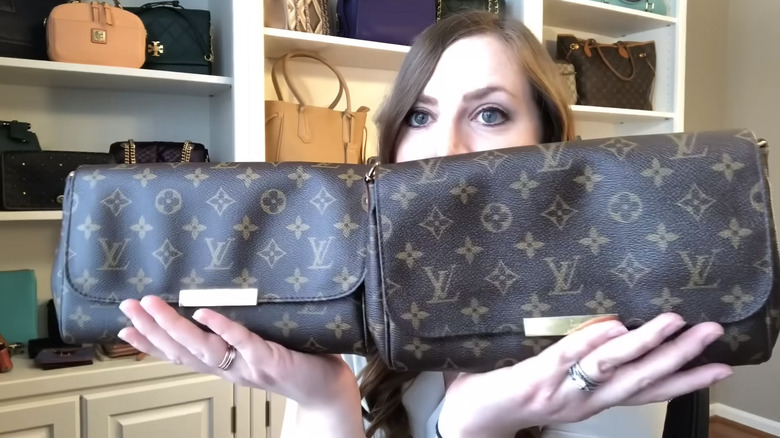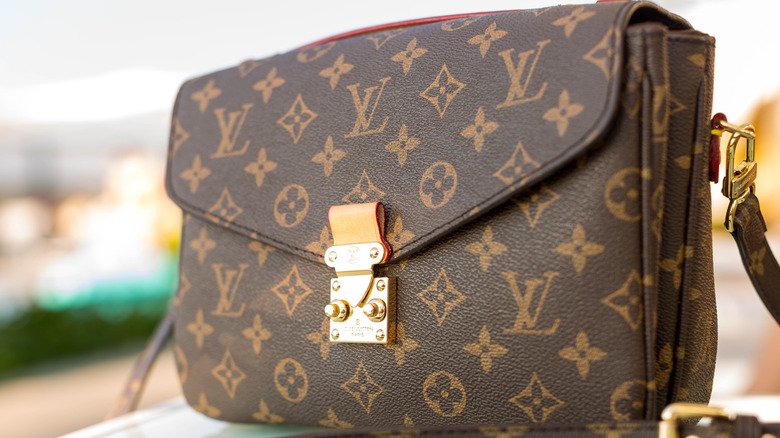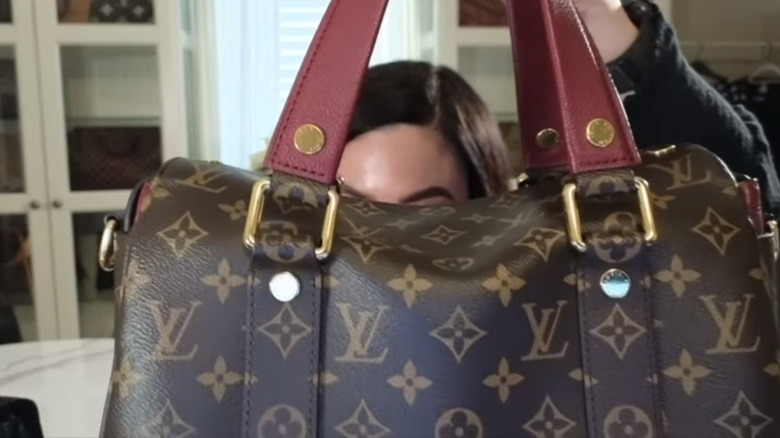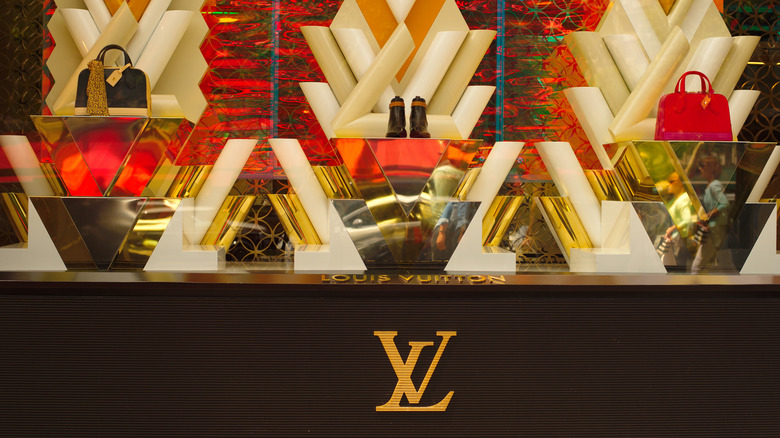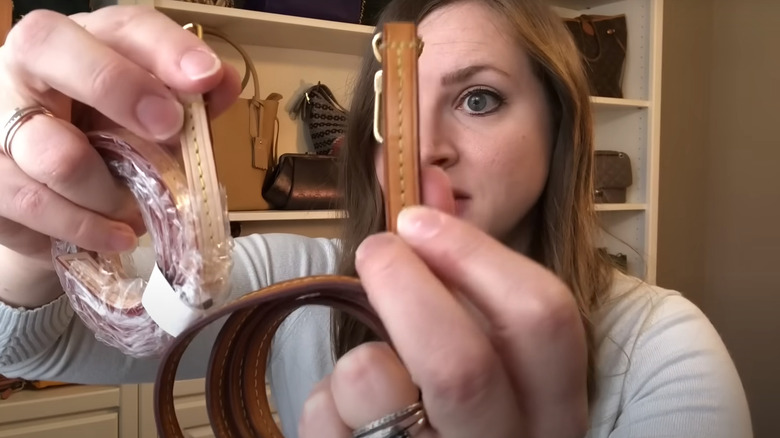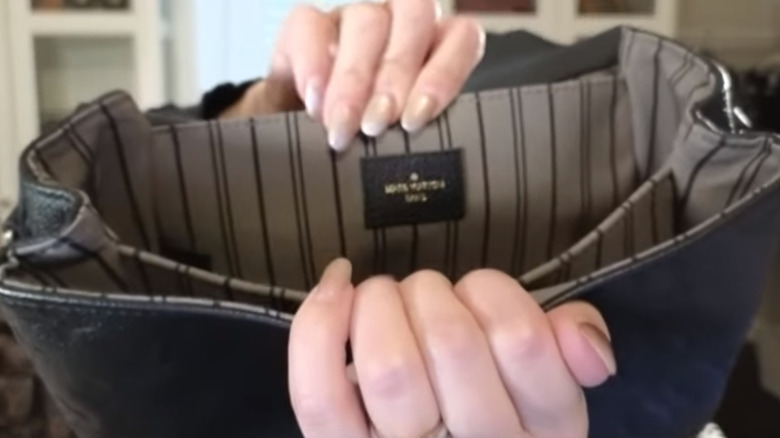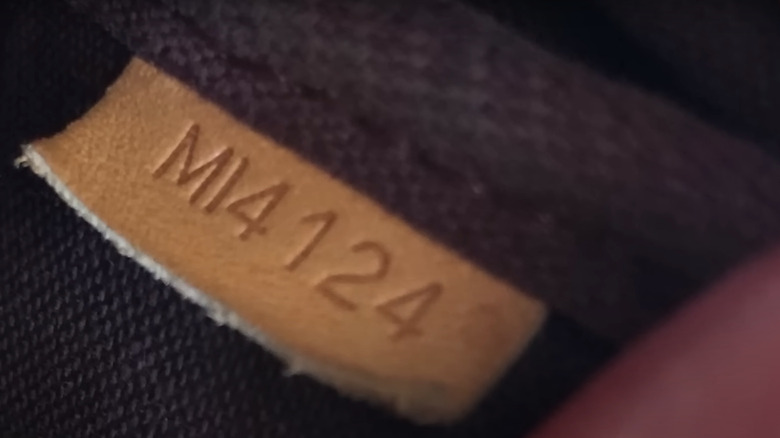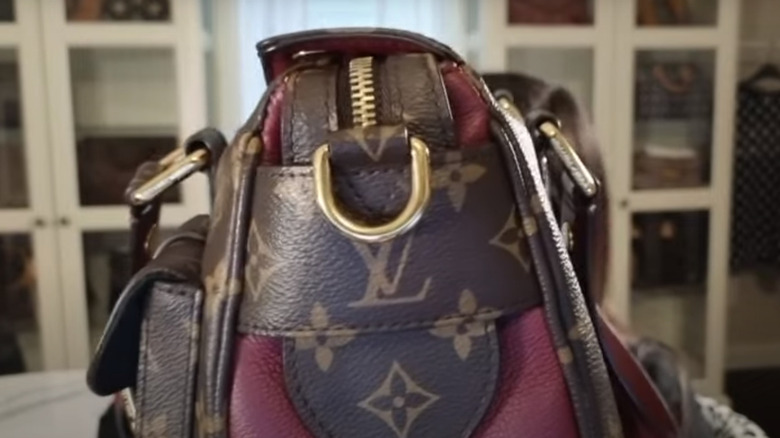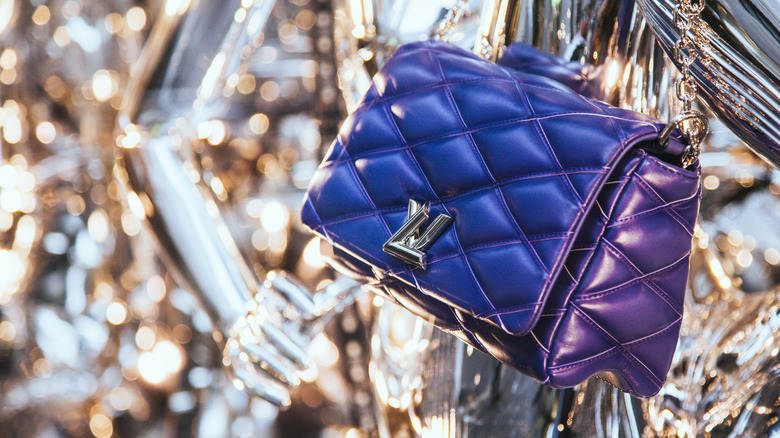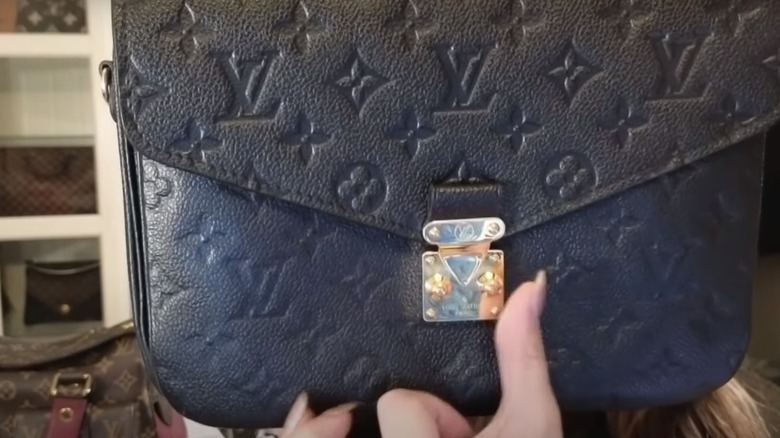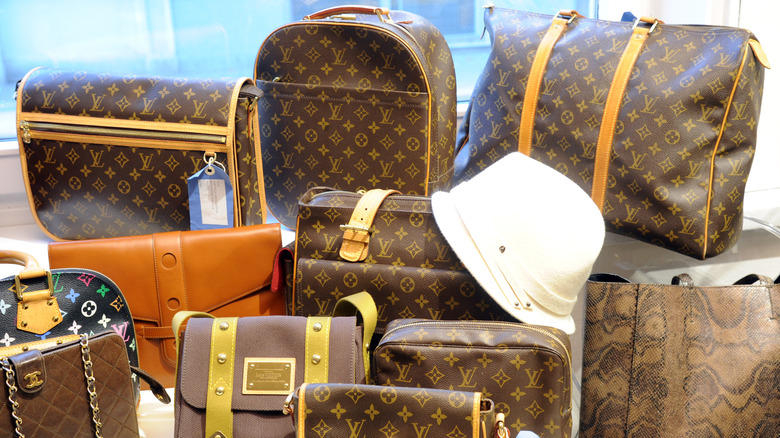Here's How To Make Sure That Louis Vuitton You Have Your Eyes On Is The Real Deal
A December 2023 Business Insider article highlights how many users of the X platform seem to be outraged at Elon Mask for allowing the advertisement of fake Louis Vuitton bags. This is in direct contrast with X's counterfeit goods policy, which prohibits the sale and advertisement of counterfeit products on the platform. Nevertheless, policy aside, users were enraged to find their feeds full of scam ads. Characteristically, one user said, "Why is my whole feed full of scammy bag ads???"
In light of this recent development, Glam decided to dive deeper into how you can make sure that the Louis Vuitton you have your eyes on is the real deal. In this day and age, where everything can be sold and purchased online, being scammed is very common. This holds especially true if you are buying a pre-loved favorite from its owner. How can you be sure that what you're buying isn't fake?
Unfortunately, counterfeit products are so good that telling real from fake can be tricky. Manufacturers are improving at emulating the original style, even down to the nitty-gritty details. Putting two bags side by side, fake and real, you will see that the resemblance is so uncanny that is actually quite scary! In fact, sometimes, the only way to be absolutely sure that your beloved handbag is original is by having it assessed by a certified authenticator. However, there are certain things you can look out for as a starting point.
The logo
Almost 20% of all counterfeit products sold in the EU hold the Louis Vuitton logo. The luxury brand has taken several initiatives to tackle the problem and employs more than 50 people responsible for anti-counterfeiting measures. One of the things they have done is to introduce the signature Monogram Canvas used to make these bags.
The interlocking L and V of the logo are very characteristic and instantly recognizable. However, when looking to buy a luxury bag, pay close attention to the logo. The right arm of the V letter should be slightly thinner than the left arm, and the base of the L letter should be thinner than its upright side. If the font of the logo does not have this subtle detail, the bag might be a knockoff.
The diagonal pattern
Fashion enthusiast Claudia from Claudia's Fashion and Lifestyle Channelcreated a YouTube video describing to her followers how to pick a knockoff LV from the real deal. In her video, which already numbers more than 32k views, she cautions viewers to look for the diagonal pattern of the symbols. An original LV bag will have the three symbols (LV logo, Fleur-de-lis, and circle with four-petal flowers inside) in a repetitive diagonal sequence anywhere you look on the bag. So, find the LV logo and check that it is followed by the Fleur-de-lis, the circle, and the Fleur-de-lis, and then conclude with the LV again. If the bag does not follow this sequence, then it is likely a counterfeit.
The upside down logos
Speaking of logos, one other thing to pay attention to is the upside-down monogram on the backside of the Louis Vuitton bag. Since LV bags are made from one continuous strip of leather, you should be able to see the LV monogram facing right side up on the front of the bag and facing down on the back. If the bag's monogram consistently faces up, then the bag was not made from a continuous leather strip and has seams, rendering it a fake.
You should also note that LV excels in the little details, so the bag's print should be a mirror image of itself. If a symbol, say the Fleur-de-lis, is cut on one side of the bag, it should be cut on the exact same point on the mirror side of the bag. While you may see symbols being hidden (when there are seams involved) or cut (at the bag's edges), you will never see the LV logo being cut on an authentic bag. So, if you see the iconic LV monogram being cut, then you have a red flag for a fake bag.
The Vachetta leather
All Louis Vuitton bags feature Vachetta leather, even if they are made from canvas. You will find the leather on the strap, the handles, and other details of the bag. The Vachetta leather darkens over time with exposure. Moreover, depending on the parts of the leather exposed, you will have different degrees of darkening on the leather. While the leather of original Louis Vuitton bags will acquire a honey color with exposure, fake bags will not darken at all, and if they do, they will acquire a pink tint instead. The cheaper quality leather used for the counterfeit bags will give away the truth. If you are buying a previously loved and owned Louis Vuitton bag, check the color of the Vachetta leather and compare it with other similarly aged bags. Do they match? If you're not seeing the same darkening patterns, then you're probably being scammed.
Self-proclaimed handbag lover Mama Beech — with a following over 12.7k on YouTube — posted a video on her channel describing how to check for your bag's strap and confirm whether it's Vachetta leather or a cheaper counterfeit version. In her video, she showcases the difference between a real Louis Vuitton bag and a fake one when it comes to the strap and the leather coloring. Apart from the different colors of the straps themselves, the leather on the edge of the fake bag's straps is dark red, as opposed to the authentic ones, which are not so red.
The heat stamp
One of the first things to do when you try to separate a fake bag from an authentic one is to locate the heat stamp on the inside of the bag. This stamp will have the brand's name on it — Louis Vuitton — and the country it was made in, typically France. Unfortunately, fake bags might also carry this stamp, so you need to be extra careful before deciding whether your bag really is the real deal. Look for the tiny details.
For instance, in an authentic bag, the stamp is pressed directly onto the leather instead of any other method. Moreover, authentic Louis Vuitton bags can be identified by the specific font and lettering used. Look for the characteristic short leg at the bottom of the Ls, round Os that are larger than the L, and closely spaced Ts that seem to touch. Additionally, pay attention to the thin and crisp lettering that is easy to read.
The date stamp
Check for the date stamp that's located on the inside of your bag. Typically, it's located on the upper edge of the bag's opening. On this date stamp, you will find two letters followed by four digits, all in a vertical manner, one right below the other.
The first two letters represent where your bag was made. Remember that your heat stamp also tells you where the bag was manufactured, so check if these two locations match. For a complete listing of country codes, you can consult The Handbag Clinic. When it comes to the numbers, the first two of the four-digit numbers represent the week of the year the bag was created, and the last two represent the year it was made. These codes can differ slightly through different time periods, so make sure you do your research, especially for vintage models.
In her video, Mama Beech cautions you to be extra careful of the date. If the bag states a year that indicates its age to be ten years, does the appearance of the bag match? Or is it counterfeit vintage? Plus, Beech showcases that in the fake bag, the date stamp is backward, with the letters starting at the top and moving down to the bottom of the bag, which makes it harder to read and comprehend. In authentic LV bags, the letters should be at the bottom when looking into the bag, enabling you to easily read your way up the authenticate tag.
The clean stitching
Authentic Louis Vuitton bags will always have clean and neat stitching. Moreover, the stitching is symmetrical throughout the bag. Much like the symbols are mirror images, so is the stitching on each side of the bag. For instance, if your bag has two pockets on the front, the stitching should be identical on both pockets. If one pocket has ten stitches, so will the other one.
Additionally, across the top of each handle, genuine LV bags have five mustard stitches — no more, no less. If your bag's stitches don't match this number, or if the thread used isn't the distinguishing mustard yellow but is brown or black instead, chances are you're holding a fake one.
The hardware and padlock
Authentic Louis Vuitton bags carry the highest quality hardware. Each metallic (gold-coated) piece you find on your bag, from zippers to buttons and hooks, carries the LV insignia on the front. If your bag's hardware seems tarnished or faded, or the metal seems to be poor quality, then your beloved LV is probably a knockoff.
While LV bags have padlocks, it's not uncommon for owners to lose the padlock. So, if you are looking into buying a pre-loved LV bag, whether or not it has the padlock is not a sign of authenticity. However, if it does have the padlock, make sure it has the LV sign on one side, with the respective side having "LOUIS VUITTON PARIS" engraved on it, plus the location it was made. At the bottom of the lock look for a number that will also match the number found on the lock's keys.
Another factor of authentication? LV locks are actually unpickable! Since 1896, Louis Vuitton has created a patented multi-lock system that makes it impossible for them to be picked.
S-locks
Numerous Louis Vuitton bags feature distinctive S-locks positioned on the front, securing the top part of the bag as it folds closed with a metal ending inserted into the lock. An often overlooked detail, these S-locks can be key to determining if you're dealing with a fake.
As you might expect, these locks are designed with two buttons on the left and right that either press outward or push inward to release the metal end, allowing for the bag to be opened. But, what sets authentic Louis Vuitton bags apart is the functional distinction between the buttons. In genuine items, only the right button is operational, serving the practical purpose of releasing the lock, while the left button is purely decorative, contributing to the bag's aesthetic appeal. This unique feature serves as an additional hallmark of authenticity for discerning collectors and enthusiasts.
Look for trusted sellers
When buying online, make sure you research the sellers before spending money. Look for customer ratings and reviews, and never trust a seller that has negative reviews on their page. If the seller has no return policy, then this might be an indication of a scammer, for trusted sellers who are confident in the authenticity of their products will allow you to return a product if you suspect it is a counterfeit.
If you're buying a preloved bag such as the iconic Louis Vuitton Neverfull tote, which is a classic option and never out of fashion — but sadly requires a waiting list to be purchased new, hence the secondhand option – then be extra careful. Since this might be a one-time seller, then chances are you won't be finding any reviews available.
Another word of caution is about the pictures the seller is using. Are they really from the bag they are trying to sell, or are they pictures of original Louis Vuitton bags carefully placed to trick unsuspecting buyers? Contact the seller and request close-up pictures of everything discussed above: the heat stamp, the date stamp, the Vachetta leather, the stitches, and the hardware. If you are still not convinced, then you should not close the deal. It's always ideal to look for the best sites to get gently used designer goods. Or if you really have your heart set on that specific bag, you can get it verified by certified Louis Vuitton authenticators.
